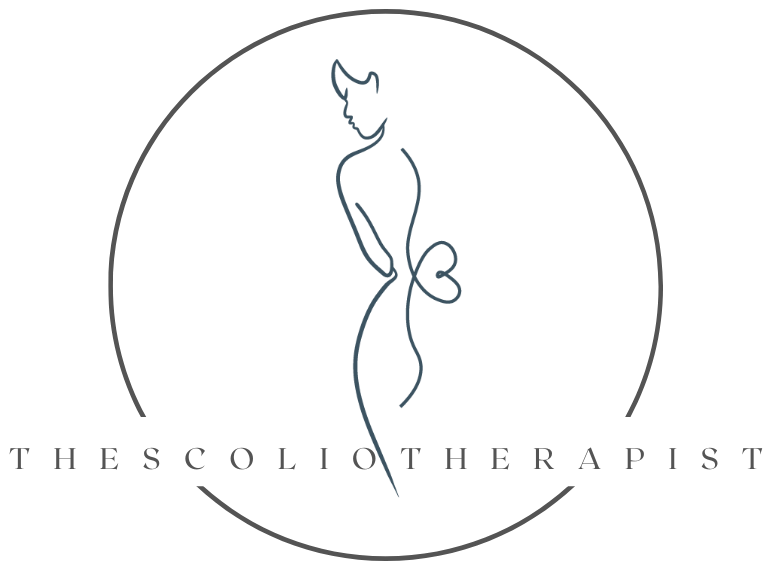Is Small-Group Scoliosis Coaching Right for You?
Whether you just got your diagnosis or have known for years that you have scoliosis, it’s so important to have trusted resources for managing your curve. And if you’re fortunate enough to live in an area where you have access to in-person scoliosis therapy, that may be the best choice for you.
But many people don’t have that option. Without a local expert to talk to, you might have spent hours searching Google for answers to your scoliosis questions — only to end up more confused and disheartened than ever. I saw this experience frequently when I started working with scoliosis patients, and I set out to create an answer to this gap in care.
The result was The Scoliosis Strength Collective. This is my six-month small-group scoliosis coaching program that offers online support, connection, and resources to scoliosis patients all over the world. And today, I’m taking you along for a deep dive into this program so you can decide whether small-group scoliosis coaching is the right fit for you.
How Small-Group Scoliosis Coaching Works
If you’re interested in joining The Scoliosis Strength Collective, the first step is to schedule a free discovery call with me. During this call, we talk about your curve and assess whether the small-group program would be a good fit. For example, if you don’t have any local scoliosis resources or prefer a virtual environment, this program could be a great fit. It also works well for people who aren’t living with severe pain or restriction.
If it turns out that The Scoliosis Strength Collective would be a good fit for you, here are some of the benefits you can expect:
Curve mapping
Access to Scoliologic Fitness classes
Learning more about your curve type and how to treat it effectively
Admission to a small group (6 people or fewer) of scoliosis patients with your same curve type
Weekly Pilates for scoliosis classes with your curve group (if you can’t make the live sessions, you can access a recording)
Weekly homework videos with exercises/movements designed to help you improve your alignment.
Access to The Scoliosis Movement Bootcamp, an online course that teaches you how to modify your daily routine for less scoliosis pain.
What do you need for those scoliosis exercise sessions? Don’t worry — you won’t have to go and join a fancy gym (unless you want to). You can do everything at home with this equipment:
Pull-up bar
Yoga mat
Yoga blocks
Wedges
Small squish ball (I like the Coregeous Ball)
Yoga strap
Now, let’s look at what you can expect to gain from the program.
Small-Group Scoliosis Coaching Pros
Here are some things that current members list as their favorite benefits:
Accountability to exercise regularly
Being able to exercise without fear of hurting the spine
Noticeable strength gain
More confidence
Camaraderie with other scoliosis warriors
A hopeful outlook on scoliosis
Personal ownership of your scoliosis care
Knowing you’re not alone in your scoliosis experience
Another positive aspect of this program is that it’s a long-term coaching option. Joining is a six-month commitment (though you can leave if it’s really not the right fit).
That commitment might seem like a potential downside, but I think it’s the opposite. This time frame encourages you to really dive into the program. Plus, there’s enough time for you to see significant progress if you are consistent with the weekly classes and homework exercises. And there’s the emotional win of committing to something for half a year and seeing it through!
When Small-Group Scoliosis Coaching May Not Be the Right Fit
As helpful as this program is for many people, it’s not right for everyone. If you experience debilitating pain or uncommon side effects from your curve, individualized care might be a better fit. I’d encourage you to seek hands-on care and/or Scroth therapy from a local healthcare professional.
If you’re a complete beginner in terms of exercise or scoliosis care, this program probably isn’t the best first step. Conversely, if you’re looking for specific coaching to improve your performance in a certain sport or activity, in-person care may be better.
In-person care may also be better suited for people who are tactile learners or who don’t enjoy a virtual learning environment. Finally, if your schedule won’t permit you to attend the weekly sessions, this group program may not be best for you.
Find a Community of Scolio-Friends
Having a scoliosis community is so valuable. The support and encouragement you can get from people who truly understand what you’re going through is priceless. And a group coaching program like The Scoliosis Strength Collective is a great place to forge those friendships. But even if you decide that my program isn’t the right place for you, I’d encourage you to find a community of scoliosis friends. It’s one of the best things you can do for yourself.
If you want to learn more about The Scoliosis Strength Collective, you can find out exactly what’s included here. And if you’d like to ask questions and figure out which of my programs is the best fit for you, schedule a free discovery call!
If you want to stay up-to-date on scoliosis topics, listen to my podcast, Ahead of the Curve. Subscribe to get every episode when it airs!
Resources Mentioned
The Scoliosis Strength Collective
